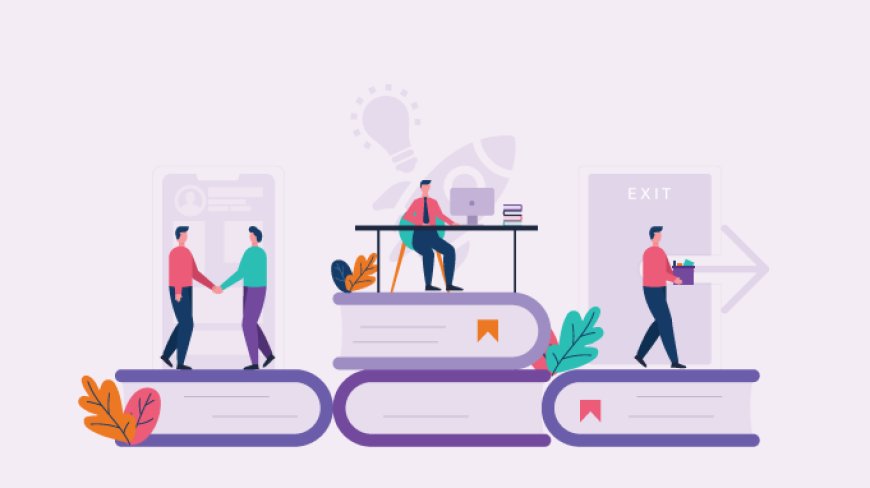How Microlearning Works for Different Types of Learners
Microlearning is a method of teaching and delivering content to learners in small, specific bursts

In today's fast-paced world, where attention spans are dwindling and information overload is a common challenge, microlearning has emerged as an effective educational strategy. Microlearning involves delivering content in small, bite-sized chunks, making it easier for learners to digest and retain information. This approach is particularly beneficial because it caters to the diverse needs of different types of learners. In this blog, we will explore how microlearning works for various types of learners and why it is a powerful tool in modern education and training.
What is Microlearning?
Microlearning is a method of teaching and delivering content to learners in small, specific bursts. These learning sessions typically last no longer than 10 minutes and focus on a single topic or learning objective. The format can vary widely, including short videos, interactive quizzes, flashcards, infographics, or even brief text messages.
Key Features of Microlearning
1. Brevity: Lessons are short and focused on one concept at a time.
2. Flexibility: Learners can access content on demand, fitting learning into their schedules.
3. Relevance: Content is designed to be highly relevant and immediately applicable.
4. Engagement: Utilizes multimedia and interactive elements to maintain learner interest.
Microlearning for Different Types of Learners
Learners have unique preferences, strengths, and weaknesses. Understanding these differences is crucial in designing effective educational programs. Let's explore how microlearning caters to various types of learners:
1. Visual Learners
Visual learners prefer to see and observe things, including pictures, diagrams, written directions, and more. They learn best through visual aids that represent information.
How Microlearning Works for Visual Learners:
- Infographics and Diagrams: Microlearning modules often include infographics, charts, and diagrams that simplify complex information.
- Short Videos: Visual learners benefit from short instructional videos that visually demonstrate concepts.
- Interactive Slides: Microlearning platforms can offer interactive slides where learners can engage with visual elements to enhance understanding.
2. Auditory Learners
Auditory learners learn best through listening. They thrive in environments where they can hear lectures, discussions, and audio recordings.
How Microlearning Works for Auditory Learners:
- Audio Clips and Podcasts: Microlearning can include short audio clips or podcasts focusing on key concepts.
- Narrated Videos: Videos with clear narration can help auditory learners absorb information more effectively.
- Discussion Forums: Some microlearning platforms offer forums where auditory learners can engage in discussions and listen to others' perspectives.
3. Kinesthetic Learners
Kinesthetic learners prefer a hands-on approach and learn best by doing. They need to engage in physical activities rather than passively consuming content.
How Microlearning Works for Kinesthetic Learners:
- Interactive Simulations: Microlearning can incorporate interactive simulations and gamified elements where learners can practice skills.
- Quizzes and Exercises: Short quizzes and practical exercises help kinesthetic learners apply what they've learned.
- Mobile Learning: The flexibility of mobile learning allows kinesthetic learners to engage with content on the go, often in real-world settings.
4. Reading/Writing Learners
Reading/Writing learners prefer to learn through written words. They excel when they can read text and write notes or essays.
How Microlearning Works for Reading/Writing Learners:
- Text-Based Content: Microlearning modules can include concise text-based content that these learners can read and absorb at their own pace.
- Checklists and Summaries: Providing summaries and checklists can help reinforce key points.
- Reflection Journals: Encouraging learners to write brief reflections or summaries of what they've learned can enhance retention.
5. Social Learners
Social learners, also known as interpersonal learners, thrive in group settings. They learn best through interaction and collaboration with others.
How Microlearning Works for Social Learners:
- Collaborative Tools: Microlearning platforms can include features like discussion boards, social media integration, and group projects.
- Peer Feedback: Social learners benefit from opportunities to give and receive feedback from peers.
- Role-Playing Scenarios: Interactive role-playing scenarios can simulate real-life interactions and foster collaborative learning.
6. Solitary Learners
Solitary learners, or intrapersonal learners, prefer to study alone and use self-reflection to process information.
How Microlearning Works for Solitary Learners:
- Self-Paced Learning: Microlearning allows solitary learners to study at their own pace, fitting learning into their personal schedules.
- Personalized Content: Adaptive learning technologies can tailor content to the individual needs and progress of solitary learners.
- Reflection Activities: Incorporating reflection activities encourages solitary learners to introspect and deepen their understanding.
Benefits of Microlearning for All Learners
Regardless of the preferred learning style, microlearning offers several universal benefits:
1. Enhanced Retention: By breaking information into small, manageable pieces, microlearning helps improve retention and recall.
2. Increased Engagement: The variety of formats and the brevity of sessions help maintain learner engagement.
3. Accessibility: Learners can access content anytime, anywhere, making it easier to fit learning into busy schedules.
4. Cost-Effective: Microlearning can be more cost-effective than traditional training methods, both in terms of production and deployment.
5. Scalability: It is easy to update and scale microlearning content to reach a wide audience quickly.
Implementing Microlearning in Your Organization
To successfully implement microlearning, consider the following steps:
1. Identify Learning Objectives: Clearly define what you want your learners to achieve.
2. Segment Content: Break down the content into small, standalone modules, each focusing on a single concept or skill.
3. Choose the Right Format: Select the format that best suits the content and the learning preferences of your audience.
4. Incorporate Interactivity: Use quizzes, simulations, and other interactive elements to engage learners.
5. Provide Continuous Support: Offer resources and support to help learners apply what they've learned.
Conclusion
Microlearning is a versatile and effective approach to modern education and training. By catering to different types of learners—visual, auditory, kinesthetic, reading/writing, social, and solitary—it ensures that everyone can benefit from personalized, engaging, and easily digestible content. As organizations and educational institutions continue to seek ways to improve learning outcomes, microlearning stands out as a powerful tool that can meet the diverse needs of today's learners. Whether you're looking to enhance employee training, support student learning, or deliver targeted educational content, microlearning offers a flexible, scalable, and impactful solution.
What's Your Reaction?



















